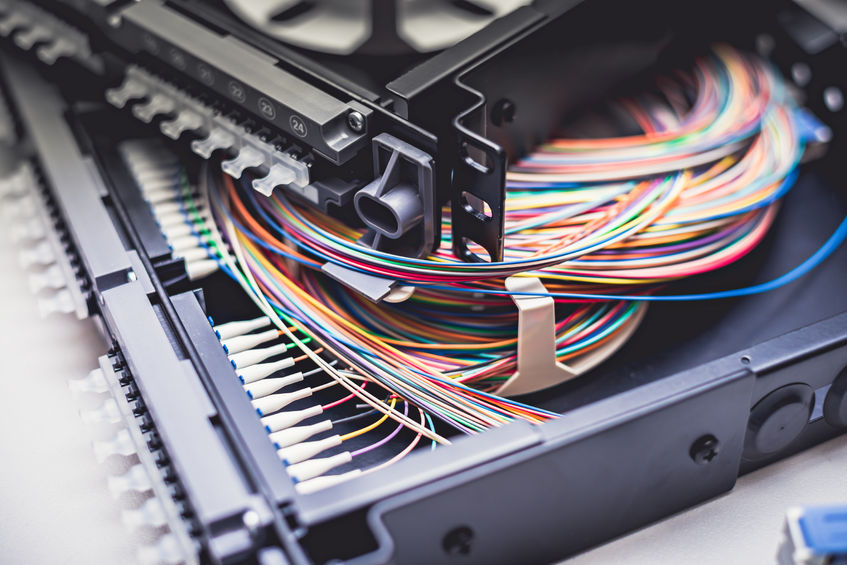Fiber optic cabling consists of insulated glass fibers and acts as a network cable. They travel long distances, providing high-performance data networking and telecommunications. When compared to wired cables, FO can transmit data over longer distances and provides better bandwidth.
Fiber optic cables support much of the world’s cable television, internet, and telephone systems. This includes Tarpon Springs.
How Fiber Optic Cabling Works
Fiber optic cables carry communication signals via pulses of light generated by tiny lasers or light-emitting diodes (LEDs).
The cables consist of one or more strands of glass, each measuring only slightly larger than the diameter of a human hair. The center of each of these glass strands is the core, and it’s this core that provides a pathway for the light to travel. A layer of glass surrounds the core which reflects light inward to avoid loss of signal over a distance. This layer — the cladding — allows light to pass through the bends of the cable.
“Single-mode” and “multi-mode” are the two primary types of fiber optic cabling. Singe mode utilizes fine strands of glass and a laser to generate light, whereas multi-mode makes use of LEDs.
Wave Division Multiplexing (WDM) techniques are often used in single mode networks to increase the amount of data potentially sent across the strand. WDM allows multiple wavelengths of light to be combined and later separated, which translates into multiple communication streams traveling via a single light pulse. Businesses in Tarpon Springs rely on both single and multi-mode FO.
Advantages of Using Fiber Optic Cables
There are three distinct advantages to using fiber optic cabling over traditional copper cabling:
- Fiber optics have a higher capacity. The amount of bandwidth carried by FO far exceeds the amount transmitted over a copper cable of a similar size.
- Signal boosters are not necessary because light can travel longer distances without losing its strength. Tarpon Springs businesses prefer this money-saving method.
- Fiber is less vulnerable to interference. Traditional network cabling requires special shielding that protects from electromagnetic interference when many cables are within close proximity to one another. This isn’t a problem when using fiber cabling because of the physical properties of the materials used.
High-Definition Audio/Video of Tarpon Springs
If you’d like to learn more about the pros and cons of fiber optic cabling, call High Definition Audio Video of Tarpon Springs. We can help you determine if FO are right for you. Talk with a professional at (727) 736-4328.


